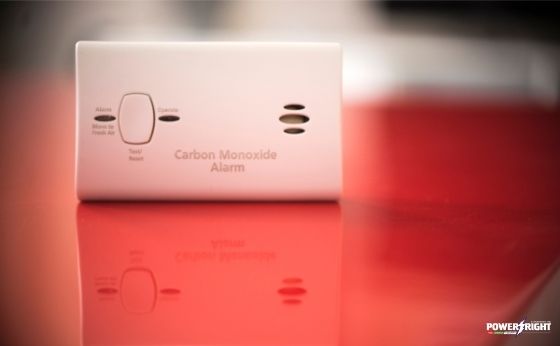
A carbon monoxide alarm is designed to warn you when CO levels have begun to accumulate over some time. It emits a siren before most people can experience poisoning symptoms. Whether you place a decent CO alarm at home or in your commercial property, it will allow you to respond appropriately to the problem.
Carbon monoxide (CO) is a molecule consisting of one part carbon and one part oxygen. Being called a “silent killer” this colourless and odourless poisonous gas can be fatal when inhaled.
It comes when carbon fuel, for example, coal, gasoline, wood, and heating oil, doesn’t burn completely. When burnt in an open area these energy sources are not dangerous. However, when you burn them in confined spaces such as garages and basements, it becomes hazardous as it inhibits the blood's capacity to carry oxygen.
Moreover, some improperly installed or malfunctioning fuel-burning devices, stoves, fireplaces, blocked chimneys etc. may be possible sources of CO. One of the reasons CO gas is so dangerous is that it is hard to detect without a CO detector.
The Carbon Monoxide exposure symptoms are “flu-like”, including severe headaches, dizziness, sleepiness, nausea, weakness, chest pain and disorientation. People who are drunk or asleep can die before having any symptoms.
If your CO alarm features a digital display, you can respond to CO levels before it becomes hazardous. It also shows the current CO level and updates every 15 seconds.
Generally speaking, CO detectors must sense CO fast and alert you immediately. At the same time, there is a surprising amount of variety. Here are the key features to pay attention to:
Electrochemical sensor. Such CO alarms are more stable during temperature changes and humidity.
End-of-life alert. This feature warns the users that it is time to replace their carbon monoxide alarm.
Battery-powered. Consider this type of CO alarm If you live in an area prone to power outages or if you own a gas-powered generator. These units suggest 24-hour CO monitoring when power is interrupted. The CO detectors can also be moved from room to room.
Peak-Level Memory. This feature keeps the record of the highest level of CO.
Plug-in with Battery Backup. While you use the electrical socket most of the time, these carbon monoxide alarms also feature a battery for protection if a short-term power outage happens.
Voice Alert. In addition to a regular alarm beep, you will get a clear announcement of the threat.
Never ignore the alarm! If you or anyone else is experiencing symptoms, get into the fresh air and call emergency.
If you are not experiencing symptoms, call a qualified technician or the fire department. While you are waiting, you can open the windows and doors, turn off all appliances.
Carbon monoxide poisoning can be fatal. The only way to prevent such unfavourable situations is to install a proper CO detector. Nowadays, you can choose from a number of options, including battery-powered or plug-in alarms, alarms with peak-level memory, voice alert, digital screen and end-of-life alert.